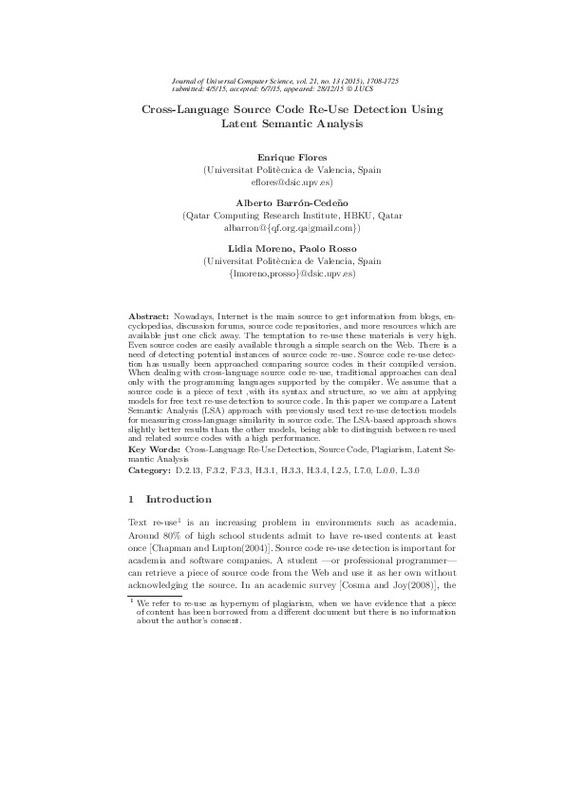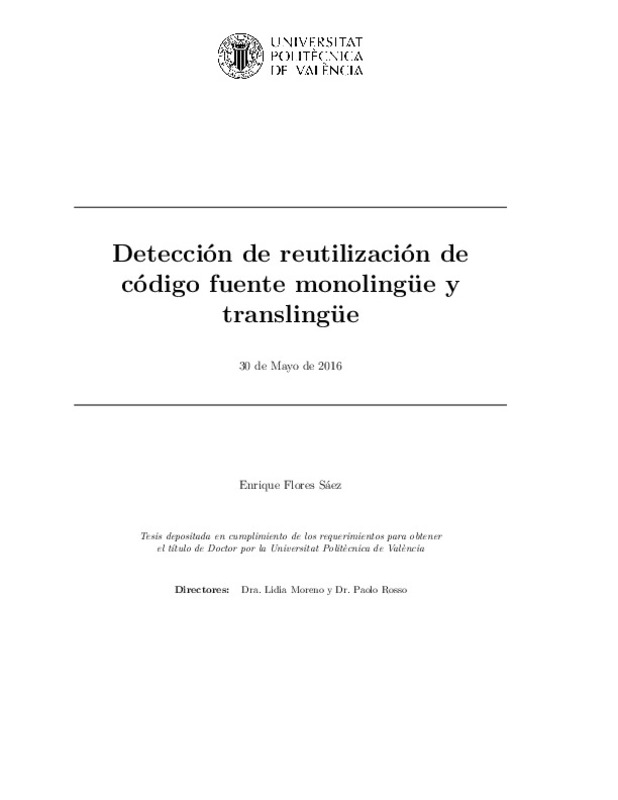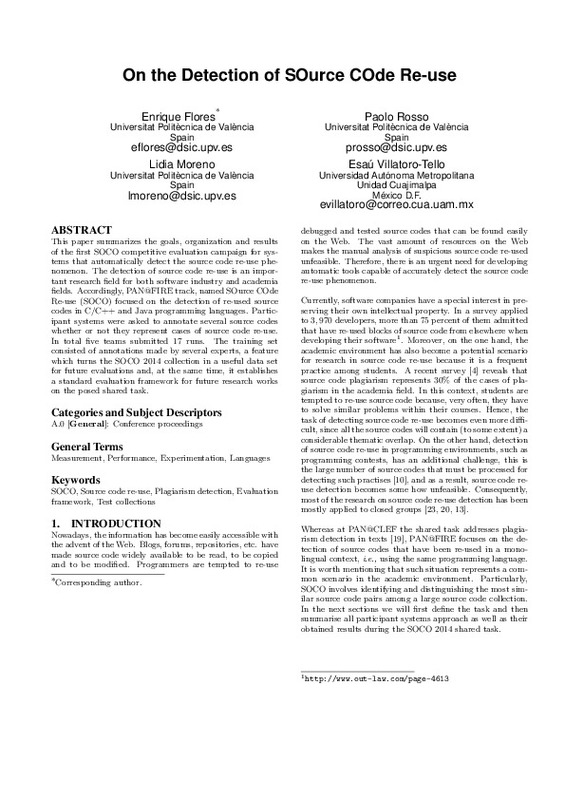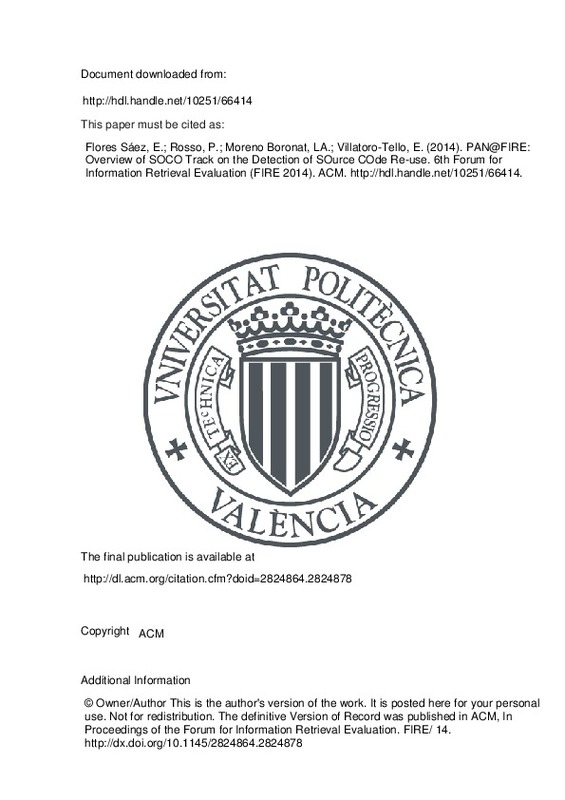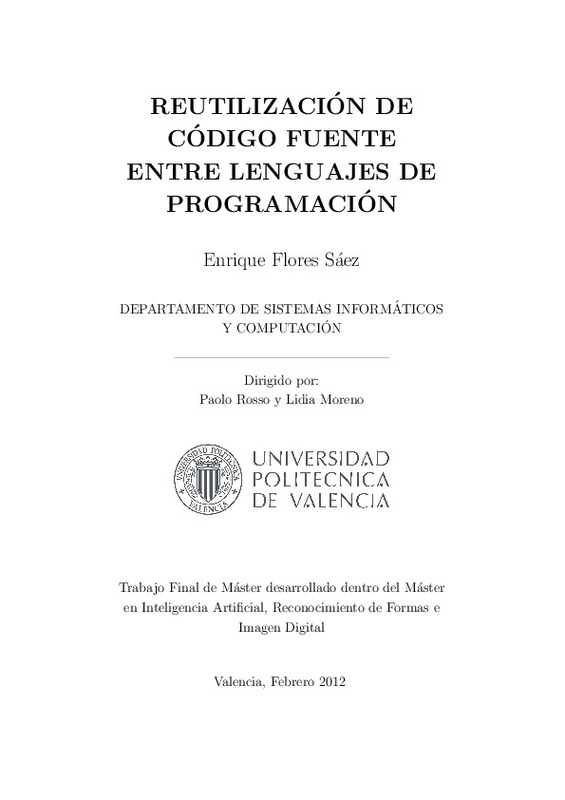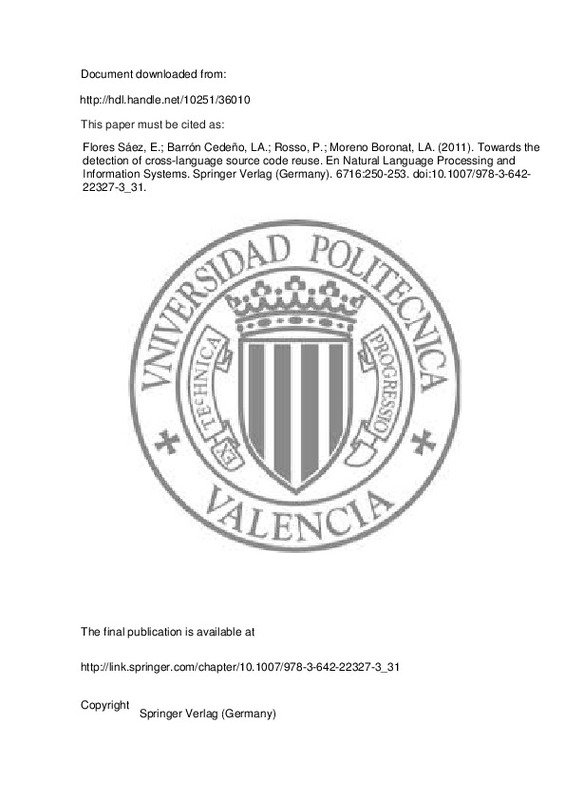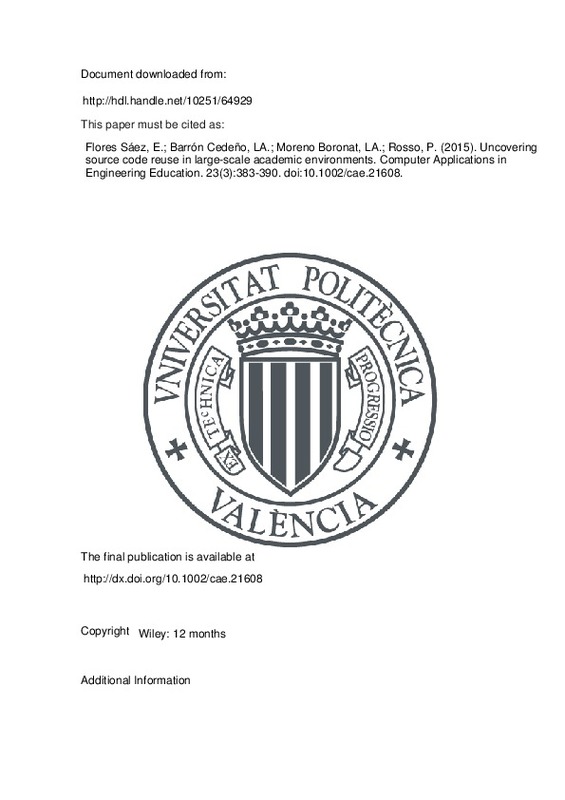

Listar por autor "Flores Sáez, Enrique"
RiuNet: Repositorio Institucional de la Universidad Politécnica de Valencia
- RiuNet repositorio UPV
- :
- Listar por autor
JavaScript is disabled for your browser. Some features of this site may not work without it.
Buscar en RiuNet
Listar
Mi cuenta
Ayuda RiuNet
Admin. UPV
Listar por autor "Flores Sáez, Enrique"
Mostrando ítems 1-7 de 7
-
Flores Sáez, Enrique; Barrón-Cedeño, Luis Alberto; Moreno Boronat, Lidia Ana; Rosso, Paolo (Graz University of Technology, Institut für Informationssysteme und Computer Medien (IICM), 2015)[EN] Nowadays, Internet is the main source to get information from blogs, encyclopedias, discussion forums, source code repositories, and more resources which are available just one click away. The temptation to re-use ...
-
Flores Sáez, Enrique (Universitat Politècnica de València, 2016-07-01)[EN] Automatic detection of source code re-use consists in determining whether a (piece of) code has been created considering another source.Plagiarism and forks in software projects are two examples of types of re-use in ...
-
Flores Sáez, Enrique; Rosso, Paolo; Moreno Boronat, Lidia Ana; Villatoro-Tello, Esaú (ACM, 2014-12-05)This paper summarizes the goals, organization and results of the first SOCO competitive evaluation campaign for systems that automatically detect the source code re-use phenomenon. The detection of source code re-use ...
-
Flores Sáez, Enrique; Rosso, Paolo; Moreno Boronat, Lidia Ana; Villatoro-Tello, Esaú (ACM, 2014-12-05)This paper summarizes the goals, organization and results of the first SOCO competitive evaluation campaign for systems that automatically detect the source code re-use phenomenon. The detection of source code re-use ...
-
Flores Sáez, Enrique (Universitat Politècnica de València, 2012-05-02)El uso de material ajeno sin reconocimiento al autor se considera plagio. Cuando se cita la fuente del material usado o simplemente éste proviene de una fuente de distribución libre se considera que se está realizando un ...
-
Flores Sáez, Enrique; Barrón Cedeño, Luis Alberto; Rosso, Paolo; Moreno Boronat, Lidia Ana (Springer Verlag (Germany), 2011)Internet has made available huge amounts of information, also source code. Source code repositories and, in general, programming related websites, facilitate its reuse. In this work, we propose a simple approach to the ...
-
Flores Sáez, Enrique; Barrón Cedeño, Luis Alberto; Moreno Boronat, Lidia Ana; Rosso, Paolo (Wiley: 12 months, 2015-05)The advent of the Internet has caused an increase in content reuse, including source code. The purpose of this research is to uncover potential cases of source code reuse in large-scale environments. A good example is ...
Mostrando ítems 1-7 de 7

Universitat Politècnica de València. Unidad de Documentación Científica de la Biblioteca (+34) 96 387 70 85 · RiuNet@bib.upv.es


